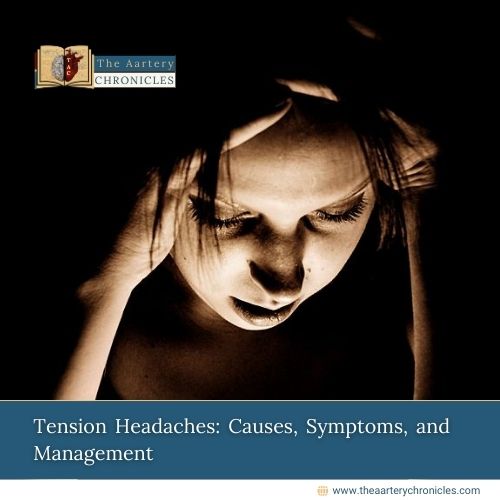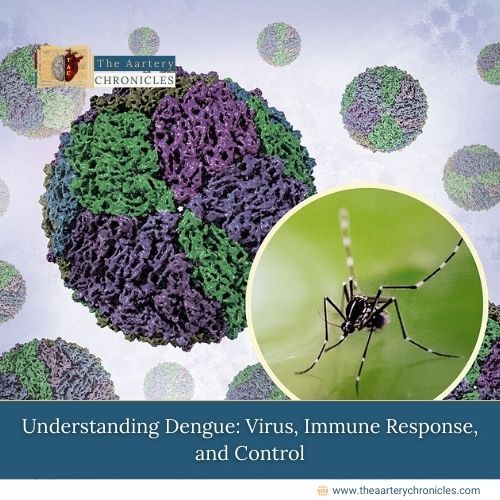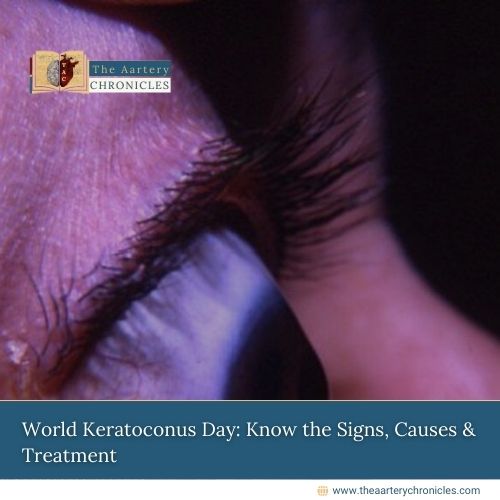
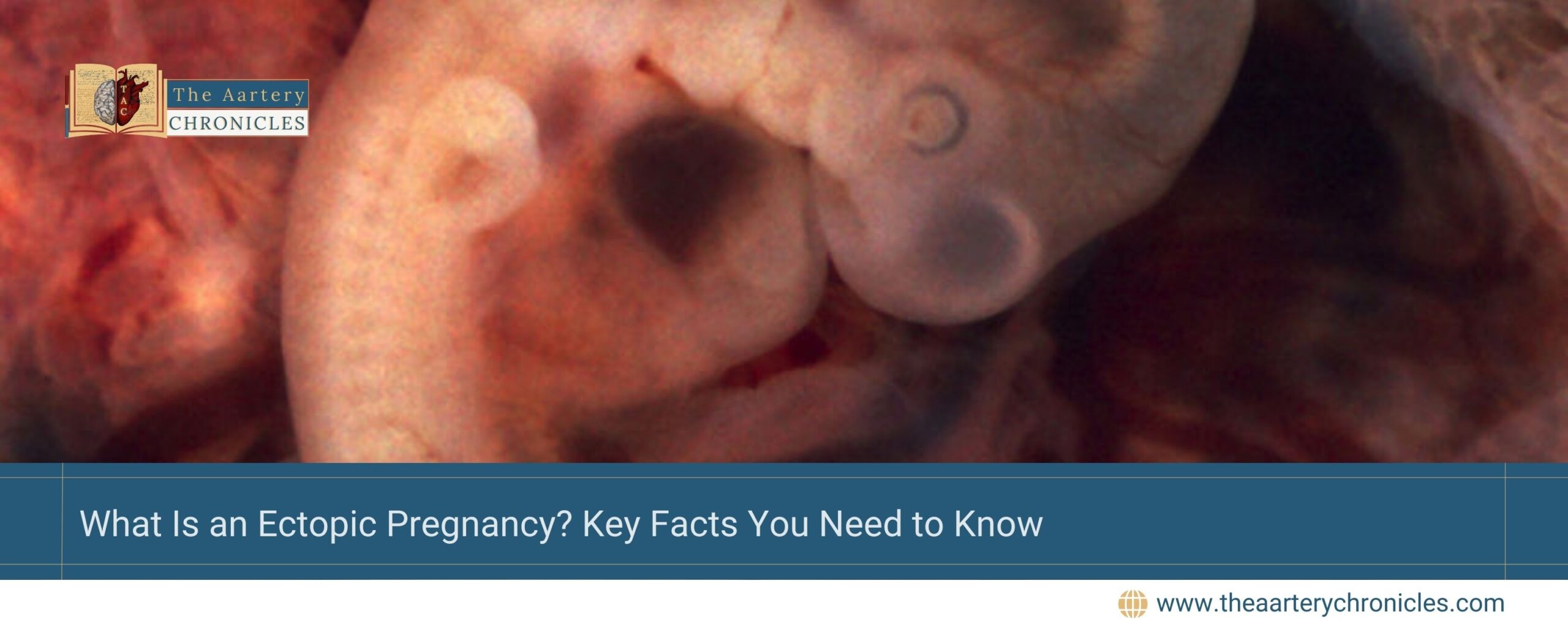
What Is an Ectopic Pregnancy? Key Facts You Need to Know
Introduction
For Maya, the excitement of her first pregnancy was overwhelming. She and her partner had been trying for months, and the positive test felt like a dream come true. But her excitement turned into concern when she started experiencing sharp abdominal pain and unexpected bleeding just weeks later. A doctor’s visit confirmed the shocking diagnosis of an ectopic pregnancy, a life-threatening condition in which the fertilized egg implants outside the uterus. Maya’s story is not uncommon; understanding the causes and recognizing the symptoms of ectopic pregnancy can save lives.
This article seeks to enhance understanding of the potentially life-threatening condition of ectopic pregnancy by highlighting its causes, risk factors, symptoms, and treatment options.
What is Ectopic Pregnancy?
In a normal pregnancy, after fertilization, the egg travels through the fallopian tube to reach the uterus, where it attaches to the uterine lining (endometrium). The uterus, also known as the womb, is a hollow, pear-shaped muscular organ located in the pelvis of people assigned female at birth (AFAB). It plays a critical role in pregnancy by providing a safe environment for the developing baby to grow until birth.
In an ectopic pregnancy, instead of implanting in the lining of the uterine cavity, the fertilized egg attaches outside the uterus, typically in one of the fallopian tubes. In this case, the fertilized egg cannot develop properly, as the fallopian tube or other locations outside the uterus are not designed to support the growing embryo.
An ectopic pregnancy is most commonly found in the fallopian tube but can occur in the
- Ovary
- The abdominal cavity
- cervix
Because these areas cannot stretch and support the growing fetus, the pregnancy cannot progress normally. The fallopian tube is not equipped to expand as the embryo grows. If left untreated, an ectopic pregnancy ruptures the fallopian tube, causing severe internal bleeding and infection, and posing a life-threatening risk to the mother. Immediate medical intervention is necessary to manage the condition, often requiring medication (unruptured ectopic pregnancy) or surgery to remove the ectopic pregnancy.
Symptoms of Ectopic Pregnancy
Early symptoms of an ectopic pregnancy may mimic those of a normal pregnancy, such as morning sickness, breast tenderness, fatigue, and a missed period. However, as the pregnancy progresses outside the uterus, the growing embryo can cause pain, bleeding, and other complications.
Key symptoms of an unruptured ectopic pregnancy include:
- Pain: Mild pain or cramping only on one side of the abdomen or pelvis.
- Vaginal bleeding: Light spotting that may be watery or dark brown in colour and differs from a normal period.
- Rectal Pressure: Pain or pressure when going to the loo for urination or pooping.
If an ectopic pregnancy continues to grow without treatment, it can lead to more serious complications, including the rupture of the fallopian tube. A ruptured fallopian tube is a medical emergency which causes severe internal bleeding. Signs of a ruptured ectopic pregnancy include:
- Shoulder pain (due to internal bleeding)
- Weakness, dizziness, or fainting
- Sharp, sudden, and intense abdominal pain
- Low blood pressure
When the fallopian tube bursts due to an ectopic pregnancy, it can lead to severe haemorrhaging inside the abdomen. This sudden and significant blood loss can result in shock, organ failure, and potentially death if not treated promptly.
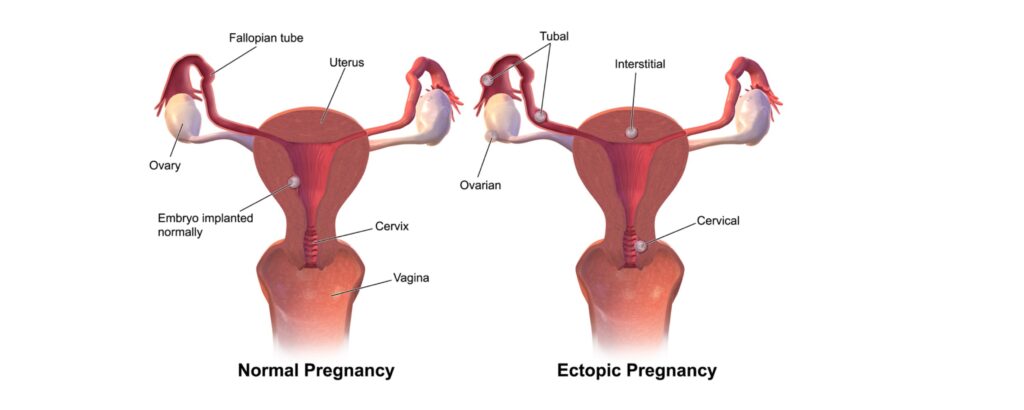
Causes and Risk Factors for Ectopic Pregnancy
While the exact cause of an ectopic pregnancy isn’t always clear, certain factors can increase the risk, including:
- Prior history of ectopic pregnancy: A past history of ectopic pregnancies increases the likelihood of recurrence.
- Tubal surgery or damage: Damage to the fallopian tubes from surgery (tubal ligation) or infections like pelvic inflammatory disease (PID) can hinder the egg’s journey to the uterus.
- Sexually transmitted infections (STIs): Sexually transmitted infections (STIs) like chlamydia and gonorrhea can cause inflammation and scarring in the reproductive tract.
- Fertility treatments: Assisted reproductive technologies such as in vitro fertilization (IVF) may slightly increase the risk.
- Smoking: Tobacco use has been linked to an increased risk of ectopic pregnancies.
- Endometriosis: The growth of endometrial tissue outside the uterus can interfere with the movement of the egg.
A maternal age of 35 years or older is linked to a four- to eight-fold higher risk of ectopic pregnancy, which is a significant cause of maternal mortality and morbidity in the early stages of pregnancy.
How is Ectopic Pregnancy Diagnosed?
Symptoms of an ectopic pregnancy typically appear between the first and third months of pregnancy, although not all ectopic pregnancies show immediate symptoms. Diagnosis is made through a positive pregnancy test, medical history, physical examination, and ultrasound to determine where the embryo is developing.
A blood test is also commonly performed to measure levels of the pregnancy hormone human chorionic gonadotropin (hCG), which may be lower in an ectopic pregnancy compared to a normal one.
Treatment Options for Ectopic Pregnancy
An ectopic pregnancy cannot develop to full term and necessitates intervention to avoid life-threatening complications. Ectopic pregnancy can be managed in different ways, depending on factors like whether the fallopian tube has ruptured, the stage of the pregnancy, and the person’s hormone levels.
- Medication: Methotrexate is commonly used to treat an ectopic pregnancy if diagnosed early and without a fallopian tube rupture. This medication halts cell growth, effectively ending the pregnancy. The body then absorbs the pregnancy over a span of 4–6 weeks, and there is no need for the removal of the fallopian tube.
- Surgery: In cases of rupture or if medication is ineffective, laparoscopic surgery is performed to remove the ectopic pregnancy. This may involve removing the affected fallopian tube (salpingectomy) or preserving it (salpingostomy).
Regular follow-up appointments are necessary to ensure complete resolution.
Prevention and Awareness
Although ectopic pregnancy cannot always be prevented, certain precautions may help lower the risk:
- Practice safe sex to minimize the risk of pelvic inflammatory diseases.
- Quit smoking to improve reproductive health.
- Seek early treatment for reproductive health issues.
- Talk to your doctor about the potential risks and benefits of fertility treatments to make an informed decision.
Conclusion
Ectopic pregnancy is a serious but manageable condition with early diagnosis and appropriate treatment. Awareness of its symptoms and risk factors can lead to timely medical intervention, reducing complications and preserving future fertility. If you suspect an ectopic pregnancy, seek immediate medical care to ensure your safety and well-being.







